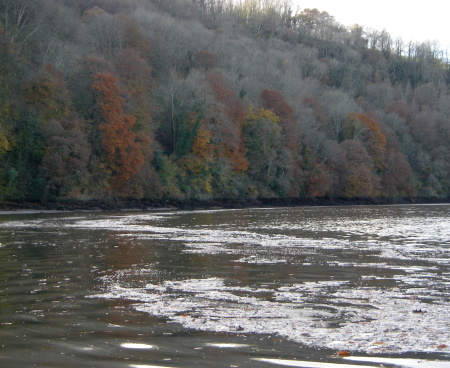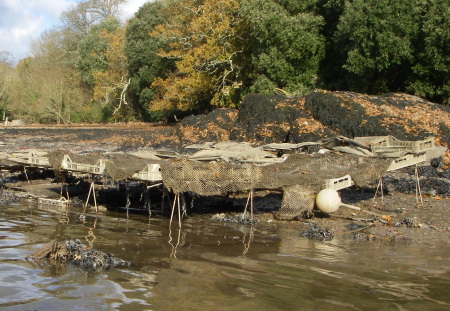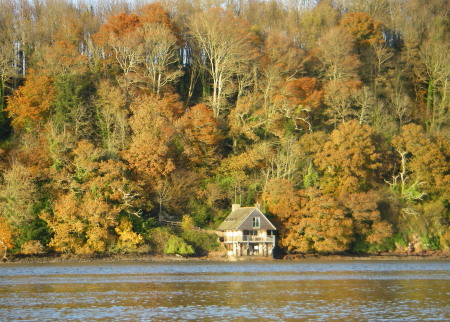The heavy green walls of the summer Dart are becoming more transparent, so the bones of the landscape show through.
A kayaker has to learn the ways of the tidal Dart, or much energy is wasted. The furthest band of blue disturbed water is the flood tide, with waves whipped up by the wind blowing against it.

Another useful indicator, particularly at this season, is the fallen leaves which accumulate at the edges of eddies. Here the paddler is enjoying the flood stream but close by is the dense shining mass of leaves collected in lines where the flood meets the backward flowing eddies. With occasional strenuous crossing of the main stream it is easy to travel against the tide.

The tidal range is about 4.5 m at Dartmouth and 3 m at Totnes. This is the tide mill dam at Stoke Gabriel, about half way down the tidal estuary. It’s a shame it is not used to make electricity. The mill pond is popular with model boat enthusiasts.

An industry that still thrives on the tidal range is cultivating oysters, here resting until the tide returns to Dittisham.

The tides bring the temperate water of the English channel far inland and give the mild climate that suits the vineyard at Sharpham.
tim P
